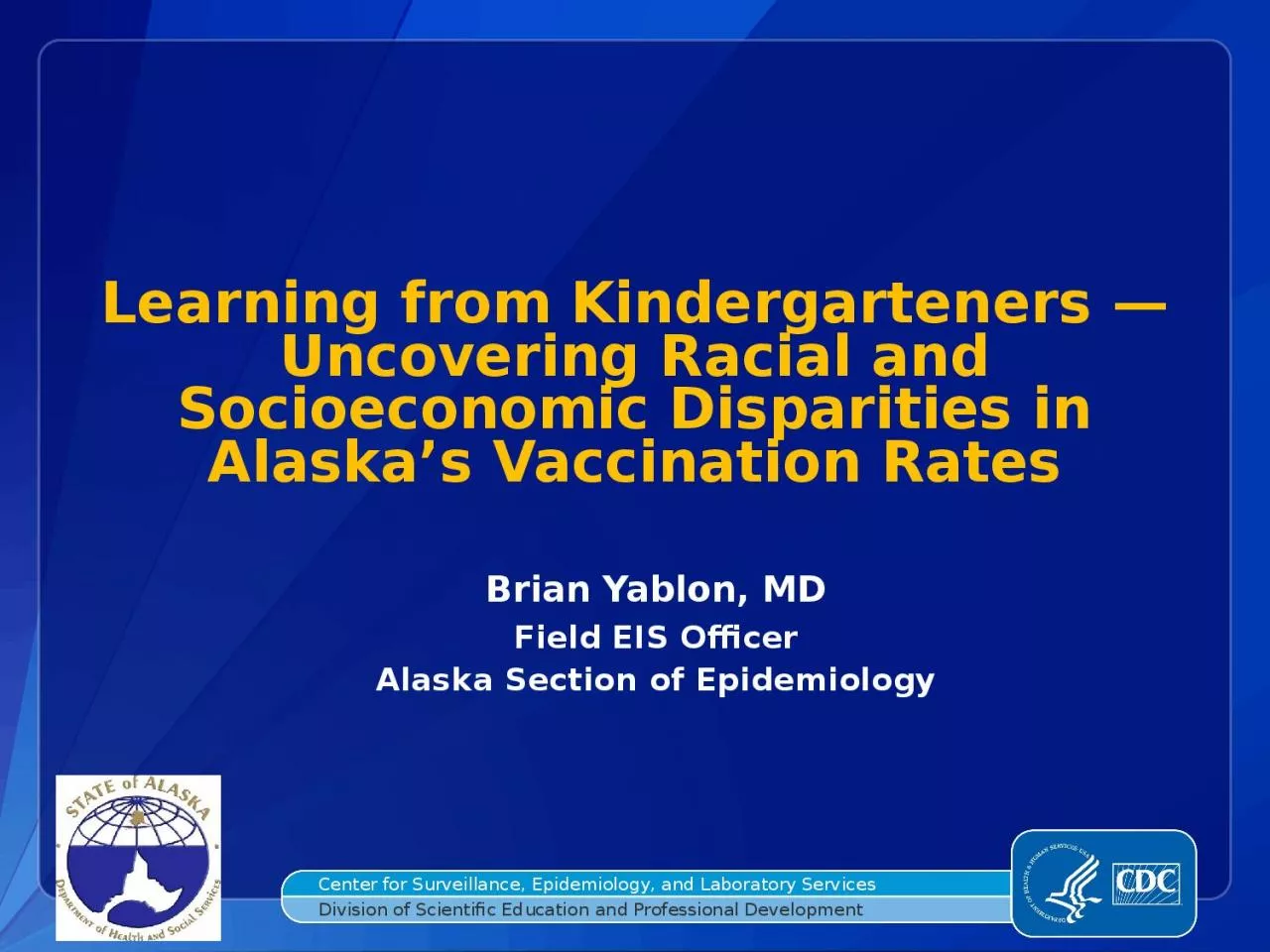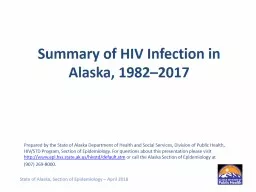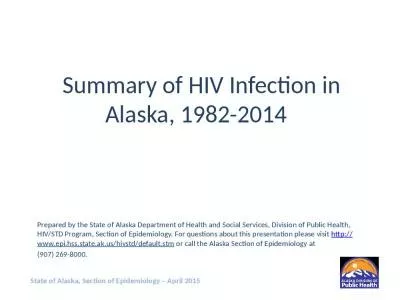PPT-Field EIS Officer Alaska Section of Epidemiology
Author : sophia2 | Published Date : 2024-02-09
Brian Yablon MD Center for Surveillance Epidemiology and Laboratory Services Division of Scientific Education and Professional Development Learning from Kindergarteners
Presentation Embed Code
Download Presentation
Download Presentation The PPT/PDF document "Field EIS Officer Alaska Section of Epid..." is the property of its rightful owner. Permission is granted to download and print the materials on this website for personal, non-commercial use only, and to display it on your personal computer provided you do not modify the materials and that you retain all copyright notices contained in the materials. By downloading content from our website, you accept the terms of this agreement.
Field EIS Officer Alaska Section of Epidemiology: Transcript
Download Rules Of Document
"Field EIS Officer Alaska Section of Epidemiology"The content belongs to its owner. You may download and print it for personal use, without modification, and keep all copyright notices. By downloading, you agree to these terms.
Related Documents














